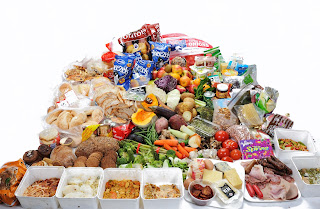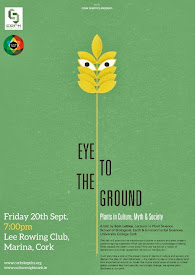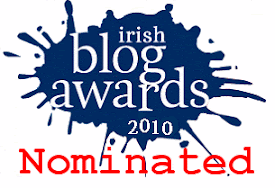Eating Japanese Knotweed (and other daft ideas)
 |
| Image: Wikipedia |
This strikes me as a terrible idea.
The plant itself is certainly edible - the Japanese have been eating it for years. It's Japanese name, itadori, means 'well being' and it seems to have some medicinal properties. It also tastes a bit like rhubarb apparently. I wouldn't know, I haven't tried it.
I haven't tried it for the same reason I don't advise you try it. Encouraging people to harvest and transport a regulated, invasive species is the perfect recipe (if you'll pardon the pun) for its continued and accelerated spread.
Japanese Knotweed (Fallopia japonica) is, as you will have guessed, native to Japan and the neighbouring region. It was introduced to the UK in the mid-19th century and quickly spread to Ireland and other parts of the world. Introduced as an ornamental plant, it quickly became a real problem.
The plant is capable of growing at a tremendous rate - 1 metre in a month- and forms big stands 2-3 metres in height. The early shoots are spear like, similar to asparagus in appearance and the plants produce delicate white flowers in late Summer. The real problem is underground where the plant forms tough rhizomes, adapted root-like organs, which remain in the soil even during the Winter when the rest of the plant dies back.
Japanese Knotweed thrives on disturbance and it is mainly spread by fragments of rhizome, crown or stem being accidentally or deliberately moved. This leads to some real (and expensive) problems including a massive reduction in biodiversity under the alien canopy; structural damage to buildings and infrastructure; and the significant cost of its removal.
Data from 2010 suggest that the plant costs the UK £165 million a year to control. If the plant were to be eradicated in the UK by current methods it would cost £1.56 billion. For one site alone, the 2012 London Olympic site, it cost £88 million to deal with this one invasive plant. Nobody wants Japanese Knotweed on their land.
 |
| Image: Wikipedia |
Harvesting Japanese Knotweed from the wild, no matter how careful you are, is also fraught with problems. The plant can easily regrow from small fragments the size of your fingernail. If we're lucky, you'll drop these fragments at the original, infested site. If not, you'll drop them on your walk back to the car or in your front garden when you unload the car.
Simply put, encouraging people to mess around with an invasive species like Japanese Knotweed is, in my view, irresponsible. It may also be illegal.
In Ireland, it is an offence to "plant, disperse or cause to disperse or otherwise cause to grow" the plant. It is also an offence if "he/she has in his/her possession for sale or for breeding/reproduction/transport....anything from which the plant can be reproduced or propagated".
In the meantime, there are chemical and physical control options and scientists in the UK are developing a biological control approach using a sap-sucking insect called Aphalara itadori. This is an old enemy of the plant, found in Japan and currently being tested in the UK to see if it will do the same job in this part of the world (and not eat anything else, by accident). The trials haven't been a total success with numbers surviving over winter too low to have much of an effect, but the tests are ongoing. Hopefully, before too long we will have a sustainable control option for this invasive plant. In the meantime, stop eating it.






















